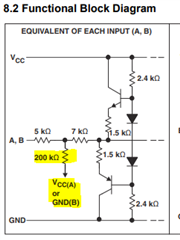Other Parts Discussed in Thread: AM26LV32
Hello.
I would like to ask you two questions about the fail-safe function of the quad differential line receiver AM26LV32E.
1) Does the fail-safe function ensures functionality in the event of a short-circuit failure?
2) Is it possible to use the failsafe function to fix the output to High when two drivers are used in one AM26LV32E and one unplugged Cable, as shown in Figure 8-11 on page 16 of the AM26LV32 data sheet?
Also, is it possible to fix it to High even when both cables are unplugged cable?


